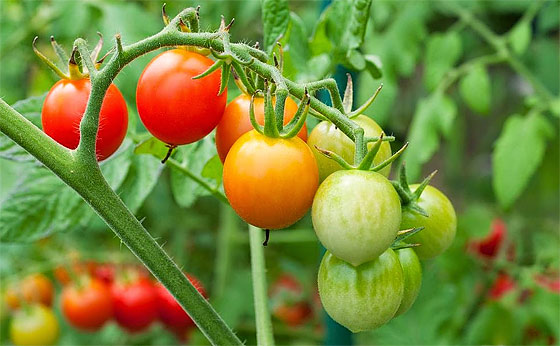Lots of Ways to Tie Up & Support Tomato Plants

Tomato plants need structural support. Is there a best way to tie up (hold up) tomato plants? I can tell you this: maybe there is not a ‘best’ way, but there sure are lots of ways! Just read the comments below to find out!
It may seem like no matter what you do, the weight of tomatoes hanging from randomly sprawling branches will eventually cause issues.
So the search is on for the best way (or ways) to tie up tomato plants ;)
Here are a few ways to tie up tomato plants. However lets hear from you – what are your success or failure stories for tying up your tomato plants?
How To Support Tomato Plants
Traditional Circular Tomato Cages
Tomato cages come in a variety of sizes. I have found that it’s better to get the bigger cages because they will definitely hold the tomato plant better.
With that said, my experience with standard tomato cages have resulted in leaning or tipped over cages if the cages themselves are not supported better. Especially true for a large tomato plant bearing lots of tomatoes!
Support the Tomato Cages
Tomato cages just stick into the ground. For better results, you might support each cage with a driven stake or a metal T-post. Just tie the cage to the support stake.
Another way is to tie several adjacent cages together with string. They will all help to hold each other up.
Tomato Product Category on Amzn
Tomato Support with Post or Stake
Sink a post or stake in the ground (wood or otherwise) and tie the trunk of the tomato plant as it grows taller. Use a good stout wooden stake tall enough for the eventual height of the tomato plant. Another alternative is a fence T-post (I’m using those this year).
An issue is that this method only supports the central trunk of the plant while the branches weighted with tomatoes are not supported in any way. Though you can tie them up to an extent.
I have had fair success this way, so long as the support stake is strong enough and driven deep enough into the ground.
T-posts and Wire
Drive in several metal fence T-posts (they have ridges and attach-points) and string some galvanized wire from one to the next (etc.) at several different heights. I’ve used electric fence wire. Then you can weave and attach parts of your growing tomato plants along the row as they grow taller.
Similarly you might use T-posts and attached fencing. Use fencing that has large enough square or rectangular openings to enable weaving the plants through them as they grow taller. This method can be used year after year – although you do have to get rid of all the dead branches in the fencing after the season is over.
The Week-by-Week Vegetable Gardener’s Handbook:
Make the Most of Your Growing Season
Let Them Grow ‘Wild’
Maybe you don’t do anything. I have seen (and tried) to just let them grow and bush on their own. The problem is that some tomatoes will end up lying on the ground and will rot. It’s interesting though – some will ‘bush’ with surprising results, depending on the variety. I believe there are specific tomato plants for this.
Upside Down Tomato Tower
I actually tried this several years ago. I bought two of them just to see how well it would work. The tomatoes hang upside down (growing ‘down’, sort of…) and it worked surprisingly well. It’s a novelty of sorts and makes for an attractive practical tomato planter for one’s porch or deck. I used the top tray to grow strawberries.
Support Tomatoes with Rebar Frame
It requires some welding skills. Build a permanent trellis ‘structure’ with rebar. It will be heavy enough to stay in place. Use your imagination as to how you design / shape it – and the way the tomato plants are ultimately supported.
Okay, lets hear from you. How do you support your tomato plants?
Also, what’s your favorite material to tie up / support the stem & branches?
I’ve tweaked this article from its original post date back in 2016. But it’s a timeless problem, and it’s “that time of the year” again. So time for a re-post.
Continue reading: Tips for Growing Tomatoes
